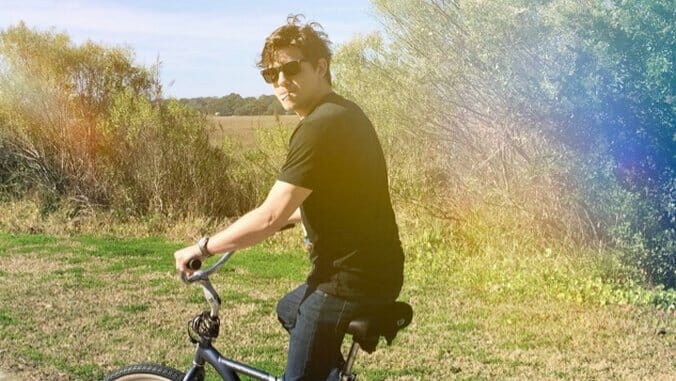Tedo Stone: The Best of What’s Next

The most surreal moment Tedo Stone can recall in his budding career playing fuzzed-out rock n’ roll is also a moment he can’t actually recall all that well. It occurred at the Atlanta venue The Masquerade when Stone and his band opened for Philly’s Dr. Dog.
“That’s definitely the most euphoric moment that I’ve had playing music, and I don’t even remember half of it,” Stone tells me in his Georgia drawl. “I think because I was so in the moment, and there was such a high that I walked off and went, ‘whoa, did that just happen?’”
A palpable energy filled the packed house as Stone and his band tore through the tracks on his most recent record, 2015’s Marshes. On it, Tedo and company sound, at times, like another popular Philly band: The War on Drugs. At others, T. Rex and T. Rex-acolyte Ty Segall come to mind. Stone himself cites Neil Young’s Zuma as an influence on Marshes, and it doesn’t take a cartographer to draw a map between the murky guitar swagger of Crazy Horse on “Cortez the Killer” and the heavy garage heroics on Stone’s “In Tune.”
Right now, Stone is working on a new album. It doesn’t have a title yet, but he’s already tracked seven songs. He’ll be taking a quick break to get married, and then he will be back in the studio in October to track seven more. Stone and his band are recording with Drew Vandenberg, who has worked on records by other Peach State residents such as Deerhunter, Drive-By Truckers and of Montreal.
McKendrick Bearden of the Athens band Grand Vapids is co-producing the untitled album alongside Vandenberg who also previously mixed, produced and recorded Marshes. Bearden was especially brought on to help challenge Stone to approach his songs in a new way.
“[The new album is] sounding different from what we’ve already got going on,” Stone says. “One of the songs we were working on was a full-blown rock song, and we went through that a couple of times and listened back to it, and then we completely took a different approach. I got in the room with an acoustic, and we approached it more like a psychedelic country song. So [we’re] just trying to push the songs out of the comfort of where they were written.”
During the writing and recording process, Stone has been listening to Jackson Browne’s seminal road album Running on Empty and a legendary 1978 New Year’s concert that Tom Petty & the Heartbreakers performed in Santa Monica, CA. His desire is to make a record with no limitations; one in which he can be more vulnerable while achieving the timelessness his idols Browne and Petty have reached.
Stone mentions the latter’s classic breakthrough, 1979’s Damn the Torpedoes, as inspiration as well, but the live sound found on the other two recordings is one he and his band have been channeling in studio.
-

-

-

-

-

-

-

-

-

-

-

-

-

-

-

-

-

-

-

-

-

-

-

-

-

-

-

-

-

-

-

-

-

-

-

-

-

-

-

-








































